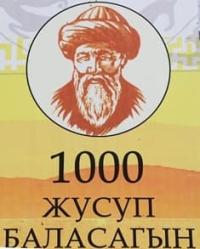You are here
History town Balasagun.


Trip to Tower Burana.
“Horses of these barbarians were extremely numerous. The Khan lived in a huge tent, decorated with flowers of gold, so bright that it dazzled the eyes of the beholder. In front of his tent were stretched long mats and on them, by his order, sat his officers in two rows, all dressed in sparkling brocade clothes. Behind them stood the Khan's personal guard. And although this was a barbarian leader, whose dwelling was a felt tent, it was impossible to look at him otherwise than with respect and admiration.”
Pilgrim Xuan-Jiang on his way from China to India on way from Issyk-Kul was met by them and was amazed by what he saw.
Travel along Silk Road of Kyrgyzstan.
City of Balasagyn existed until the XIVth - XVth centuries. Before the creation of the Karakhanid state, the peoples inhabiting the Central Tien-Shan and Semirechye professed Buddhism and Christianity. At first, in the VIth - VIIIth centuries, there was the headquarters of the Turgesh kagan (king) and a colony of Sogdians (people who migrated from the Zerafshan River basin to the Chui Valley in the Vth - VIIth centuries AD) and the area was called Kuz Ordu.
Later it was called Balasagun (in the XIth - XIVth centuries), but for a short period of time (from 1117 to 1218), when this city was conquered by the Kara-Khitans - a people who came from the east, it was their capital and was called Khosun Ordu.
Finally, having been conquered at the beginning of the XIIIth century, more precisely in 1218, by the Mongols, it was renamed Gobalyk, that is, literally - "good city". In the XIVth century, the city ceased to exist. The inhabitants left it, and it began to deteriorate more and more.
The walls of the fortress and ramparts were sagging, washed away by the rain and fluttering in the wind, and by the beginning of the XIVth century they had taken on the appearance of complete desolation, in which they are now. The greatest flourishing of the city occurred in the XIth - XIIth centuries, when it was the capital of all Central Asia, first of the Turkic dynasty of the Karakhanids, then of the Kara-Khitans.
The borders of the empire stretched from Xinjiang to the Amu Darya. In Balasagun and its suburbs there were temples - under the Karakhanids - Muslim, under the Kara-Khitans - Buddhist, and later - Christian. In one of the suburbs of Balasagun, which was called Kirmirau, a mosque with a minaret was built at the very beginning of the XIth century: the rampart of the ancient city and the hill with the remains of the mosque have been preserved.
Only one minaret has survived the centuries. It can be assumed that when the Karakhanids came to power (in the second half of the Xth century; final approval in 999), they developed intensive construction of Muslim religious buildings and one of them was not far from the capital - Balasagun, in the suburb of Kirmirau.
As a memory for posterity, over time, only one minaret remained, as an extraordinary construction skill of the architects of their time, with majestic buildings affirming the spread of Islam in this region. In the middle of the XIXth century, the ruins of the city of Burana and the towers located there became the object of study.
Excavations made a certain contribution, although they were generally episodic. As a result of the research, it was suggested that in the central part of the city there was a tetrahedral bastion and a huge square. On the square were located the houses of the city residents, outbuildings, workshops, the city market, private houses.
It was this area that was fenced with a two-row wall. The length of the outer wall reached 15 km. The area of the city was 25 - 30 sq. km. In the 70s of the last century, after the renovation work on the restoration of the Burana Tower, the octagonal base and the staircase on the southern side of the tower were restored.
During the restoration, archaeological excavations were carried out again. It turned out that the depth of the tower's foundation is about 6 meters. In addition, four prayer houses, a bathhouse, ruins of houses, a mosque, remains of sewer pipes and various pottery were found during the excavations.
The life and work of the outstanding poet and thinker who lived in the XIth century, Dzhusup Balasagyn, whose poetic and philosophical heritage is of great importance not only for the Turkic peoples, but for all of humanity, are inextricably linked with the history of the city of Balasagun.
The same can definitely be said about his famous fellow countryman, the great and also Turkic linguist and encyclopedist Mahmud Kashgari.
Authority:
"Issyk-Kul. Naryn" Encyclopedia, Frunze, 1991. "Kyrgyzstan", Mysl Publishing House, Moscow, 1977.1966. Bernshtam A.N. "Historical and Archaeological Essays on Central Tien-Shan and Pamir-Alai".







